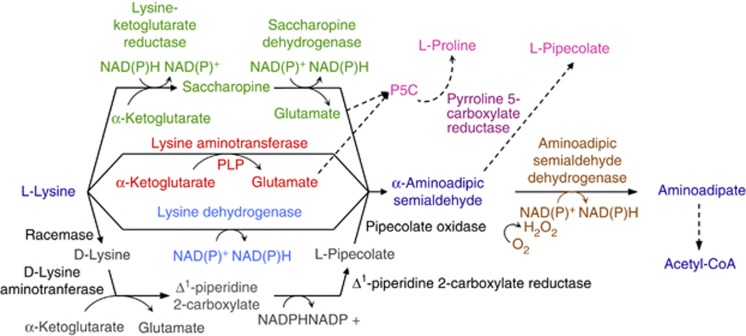Figure 1.
The four pathways used by prokaryotes to catabolize lysine to AASA. In green, lysine is converted to AASA via the saccharopine pathway. The two-step reaction involves lysine-ketoglutarate reductase, which condenses lysine and α-ketoglutarate into saccharopine, and SDH, which hydrolyzes saccharopine into AASA and glutamate. In red, lysine is directly converted into AASA by LAT, which catalyzes the transamination of α-ketoglutarate, yielding AASA and glutamate. In blue, lysine is also directly converted into AASA by LysDH, which catalyzes the oxidative deamination of lysine. In gray, a multi-step reaction starts with the conversion of L-lysine to D-lysine by a racemase. D-lysine is then deaminated by an aminotransferase to form Δ1-piperidine-2-carboxylate, which is then converted to pipecolate by Δ1-piperidine-2-carboxylate reductase. Pipecolate is finally oxidized to AASA by pipecolate oxidase. All four pathways use AASADH (brown) to convert AASA to aminoadipate. P6C, glutamate and AAA can be used as substrates for several cellular pathways, leading to the production, for example, of pipecolate and proline (pink) by P5CR (dark pink).

